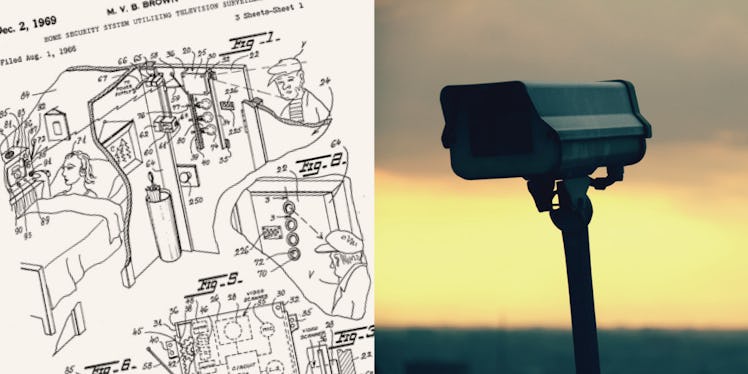Marie Van Brittan Brown Invented The First Security Camera
Too much history, not enough her-story.

Rad Women Of History is a series devoted to making sure your kids know that their mom wasn’t the first female badass, no matter what history books tell them.
Today we put a lot of faith in the all-seeing security camera (how else would you know who stole the cookie from the cookie jar?). But that kind of modern home protection wouldn’t exist without the efforts of African-American inventor, Marie Van Brittan Brown (1922-1999), who invented the first home security system.
As a nurse living in Jamaica, Queens, Brown’s schedule often left her home alone at odd hours, at a time when the crime rate in her neighborhood was steadily increasing. Frustrated by slow police response times, in 1966 Brown invented a sophisticated video and audio security system with help from her electrician husband. Though Brown was the mastermind, the actual build-out was a collaborative effort — like Jobs and Woz.
The main safety issue of the era was having to open the door to see who was a-knockin.’ Brown’s device had 4 peepholes at different levels (because home invaders can be children, too), and a camera that would move between them connected to monitor in the bedroom. You could use a remote control to communicate with the person outside via microphone, remotely unlock the door if you wanted to let them in, or sound an alarm to call for help.
The couple received a patent for the idea in 1969, and it was the first of its kind. Brown also eventually received an award from the National Science Committee, and the couple’s original patent has been referenced in 13 patent applications by inventors who used some aspect of the closed-circuit system since. It laid the foundation for all future home security systems, but really caught on when apartment buildings and businesses started adopting the model. Think about it — without that buzzer, Kramer could just bust in on Seinfeld whenever he wanted.
It’s not clear whether the Browns ever profited from their invention, and Marie certainly doesn’t get the credit she deserves (there was a New York Times interview when the patent application won approval, but zero subsequent media coverage). But with her and her family’s safety assured, Brown was able to live in Queens the rest of her life. Now don’t you feel like a wimp for moving to the suburbs?
This article was originally published on